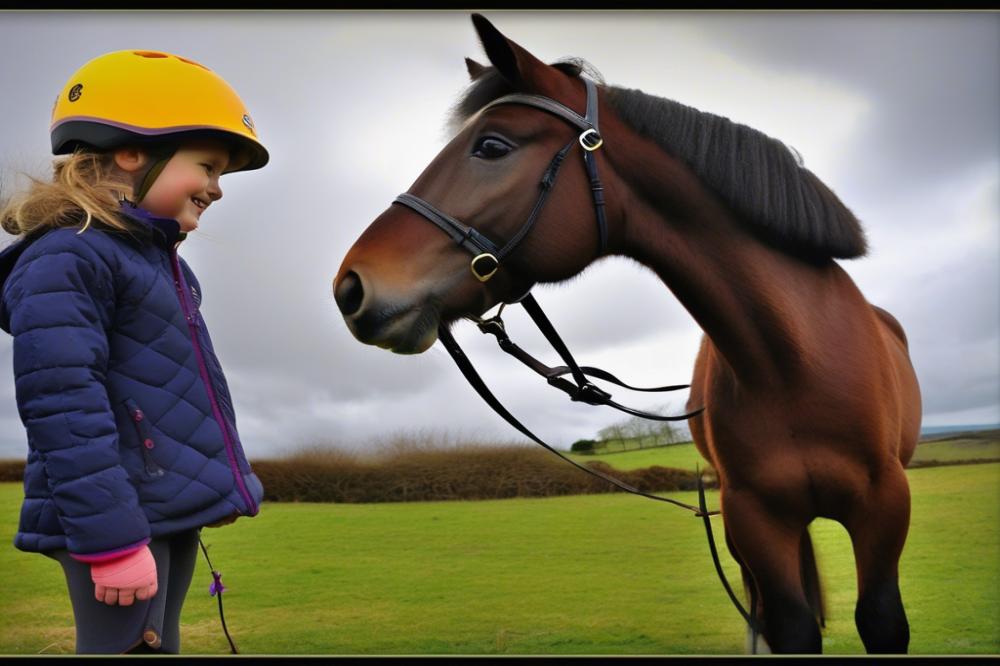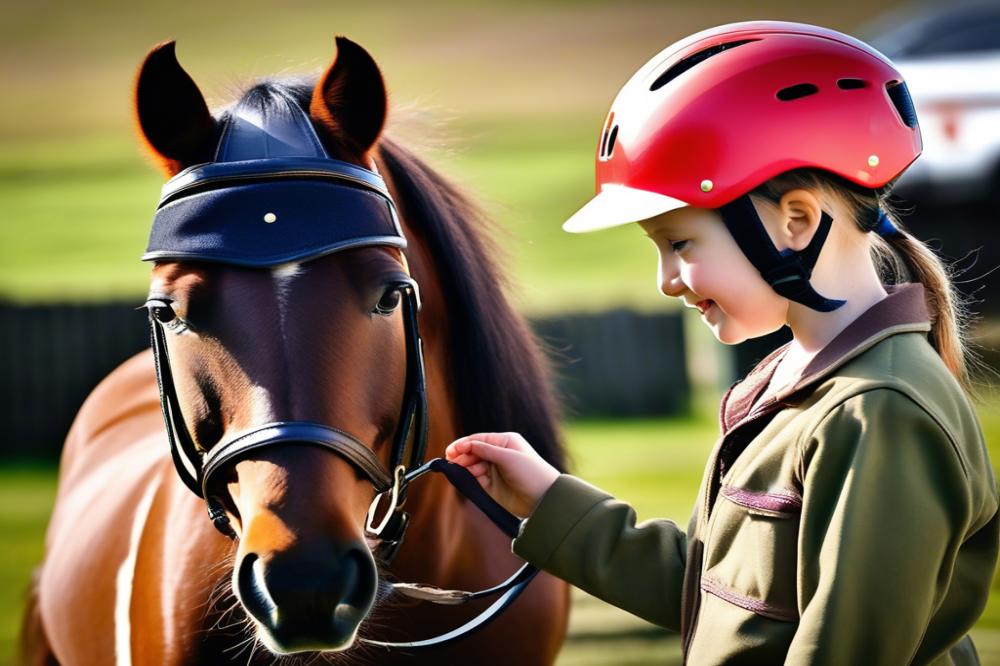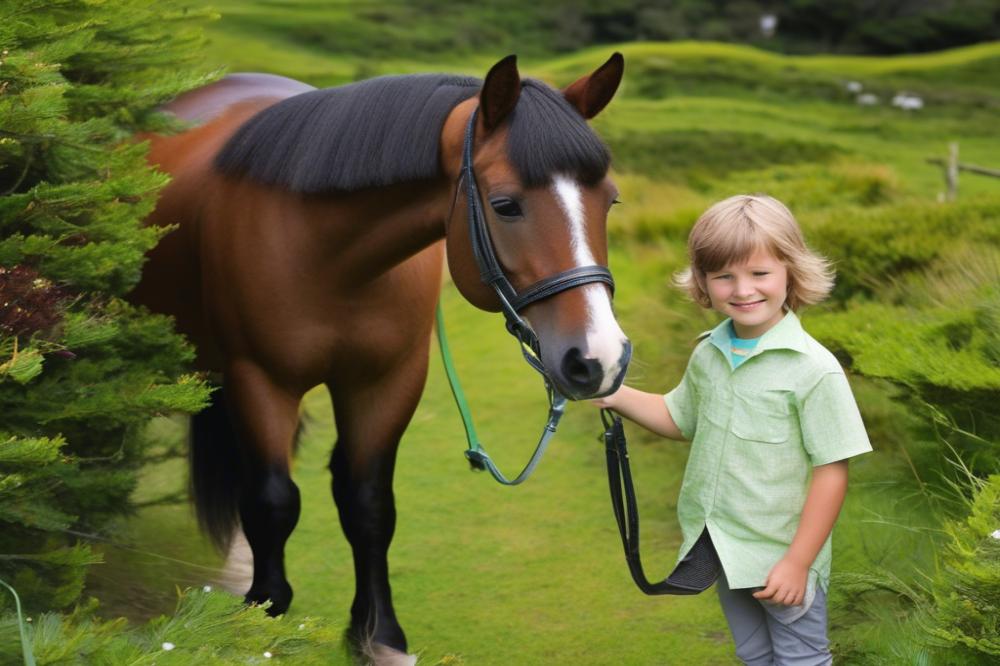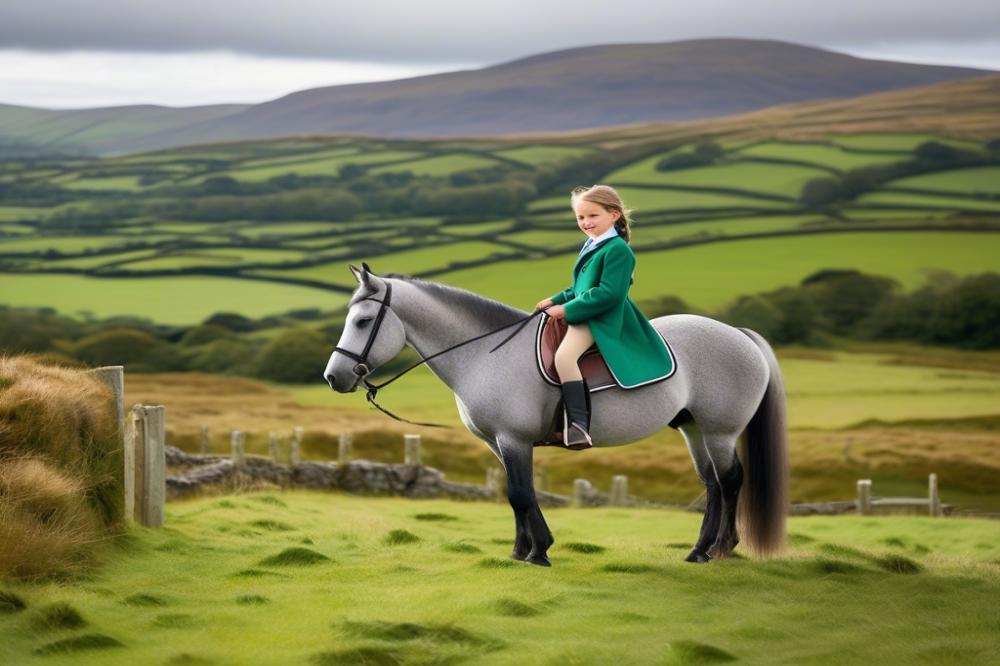Understanding the Connemara Pony
The Connemara Pony is a small equine breed known for its strength, intelligence, and gentle nature. Originating from Ireland, these ponies are often regarded as ideal companions for children. Their friendly demeanor and adaptable personality make them a popular choice for families. This breed is not only hardy but also possesses a natural affinity for learning, which makes it particularly suitable for Kids Riding.
When it comes to riding, proper techniques hold great importance. It is essential for both the child and the pony to feel safe and confident. Safety should always come first, as young riders are still developing their skills and understanding of horses. Familiarizing them with good riding practices will help build a positive bond with their pony.
Best Practices for Riding

Learning how to ride effectively starts with understanding the equipment. Choosing a well-fitted saddle and bridle is crucial. Equally important is teaching children how to approach a pony calmly and respectfully. This sets the tone for a safe riding experience.
Establishing a routine helps kids gain confidence. Regular practice on the ground, such as grooming and leading, lays the groundwork for riding sessions. Additionally, riding tips like maintaining proper posture and holding the reins correctly should be emphasized. Children should be encouraged to listen to their pony while riding. Being aware of the pony’s behavior is key to building trust.
Maintaining a supportive atmosphere helps enhance the child’s experience. Riders should praise their pony for good behavior and offer gentle corrections when needed. Riding with knowledgeable instructors can also make a big difference. Guidance from experienced individuals can instill valuable skills and boost confidence. Overall, forming a connection through these best practices is beneficial for both the rider and the Connemara Pony.
Understanding the Connemara Pony

The Connemara Pony is often considered a top choice for young riders. This breed boasts a variety of traits that make it suitable for children. First, it has an impressive temperament. Friendly and gentle, these ponies are known for being patient with inexperienced riders. They possess a calm nature, which helps build confidence in kids.
Size is another factor that contributes to its appeal. Typically standing between 12.2 to 14.2 hands high, their height is manageable for children. This makes mounting and dismounting easier, fostering independence. Additionally, their sturdy build provides stability. A Connemara Pony is built to support a rider without feeling cumbersome.
Physical attributes play a significant role in their adaptability. Their strong legs and resilient hooves allow them to handle various terrains. Kids enjoy the versatility, whether riding on a trail or in an arena. In addition to strength, these ponies exhibit a variety of coat colors and patterns, making them visually appealing to young enthusiasts.
Moreover, their friendly nature cannot be overstated. Many children find it easy to bond with these ponies, creating a sense of companionship. A willingness to learn and work with their riders adds to their charm. As a result, young equestrians often feel motivated to spend more time with them, improving both riding and handling skills.
Adaptability further enhances their suitability for young riders. Connemara Ponies easily adjust to different riding styles, from jumping to dressage. This means children can explore various equestrian activities without needing to switch mounts frequently. Their intuitive nature often leads to positive experiences, encouraging kids to grow in their riding abilities.
horseback riding Techniques for Kids

Riding a pony can be a thrilling experience for kids. Beginners often need to start with the fundamentals. Basic riding techniques form the foundation for future skills. Simple commands like walk, trot, and stop are essential. These commands help kids communicate with the pony effectively. They enhance the overall riding experience as well.
The Importance of Proper Mounting and Dismounting
Proper mounting is crucial for safety and comfort. Before getting on, check the pony’s mood. Kids should learn to approach the pony calmly. Using a mounting block can make this process easier. When mounting, they should swing their leg smoothly over. Balance is key here. Dismounting should be just as careful. A safe dismount involves stepping off gently and acknowledging the pony afterwards.
Rein Handling, Posture, and Leg Positioning
Holding the reins correctly fosters control and comfort. Children should keep their hands steady. A light grip is best. Tension in the reins can confuse the pony. Proper sitting posture promotes balance and confidence. Kids should sit deep in the saddle. Their backs should remain straight, and shoulders relaxed. Distinct leg positioning helps with stability. Knees should touch the saddle but not grip it tightly. Feet should rest in the stirrups without letting the heels rise.
Pony Safety Guidelines
When riding a Connemara Pony with children, safety should always come first. Always wear a helmet. This is crucial, as helmets protect against head injuries in case of falls. Make sure that the helmet fits snugly and is certified for riding. Along with helmets, wearing suitable riding gear is important. Long pants can prevent chafing, while sturdy boots control the feet to avoid slips.
Kids should know how to approach ponies calmly. Moving slowly and speaking softly will help prevent startling them. After the initial approach, it is essential to let the pony see and smell the child’s hand. This builds trust and reduces anxiety. When handling a pony, teach children to stand beside it, not directly behind or in front. This rule helps prevent accidental kicks or stepping on toes.
Leading the pony requires careful attention. When holding the lead rope, keep it at a safe distance. It’s best to hold the rope about halfway down for better control. Always lead the pony from the side, being mindful of the animal’s space. Encourage kids to stay attentive and watch for sudden movements. Teaching them to remain still when necessary will also help keep the pony calm.
When mounting the pony, assistance may be needed for smaller kids. A mounting block can make this easier. Always supervise the mounting process. Kids should step up confidently but not too quickly. Encourage them to check their surroundings before getting on. Make sure to lead the pony in a safe, open area where they can ride freely, away from traffic or other hazards.
Checking the pony’s gear is another key element of safety. Ensure that saddle and bridle fit correctly before riding. Loose equipment can cause discomfort for the pony, which might lead to problems during riding. Regular checks for any wear or damage will prevent accidents. Encourage kids to help with these inspections to promote responsibility.
Finally, teach children to ride with good posture. Sitting up straight not only looks better but also helps maintain balance. Strong leg position and light hands on the reins support better communication with the pony. Remind them that a relaxed body contributes to a smoother ride. Preparing for riding involves much more than just getting on the pony. Consideration and care will foster safe and enjoyable experiences.
Equestrian Tips for Family Activities
Engaging with ponies can be an enjoyable experience for the whole family. Plan regular trips to the stables where kids can connect with the animals. This will help them gain confidence and learn responsibility. Spending time with ponies can create lasting memories and teach valuable lessons.
Family-Friendly Activities Involving Connemara Ponies
Begin with pony rides suitable for all ages. Choose safe trails to explore, allowing kids to enjoy nature while riding. Riding in a group creates a fun atmosphere where families bond over shared experiences. Consider setting up a mini horse show that encourages children to demonstrate their riding skills. Everyone can join in on the fun, and prizes can make it exciting.
Fun Games and Exercises to Improve Riding Skills
Introduce games like “Simon Says” on horseback. This can help children improve their listening abilities and balance. Set up obstacles and have fun navigating through them. Kids can take turns, which fosters teamwork and supports their learning. Another engaging activity could involve using cones for a simple slalom course, encouraging agility and control while riding.
Bonding Activities Between Kids and Ponies
Grooming offers an excellent opportunity for kids to spend quality time with ponies. They can learn how to brush and care for the coat, fostering a deeper connection. Feeding time can be just as delightful. Allow children to provide treats, teaching them about nutrition and care while enjoying the experience. Taking turns with these tasks can help strengthen their bond with the animal.
Creating a scrapbook where kids document their experiences will preserve memories. Include photos, stories, and drawings that reflect their adventures. This activity encourages creativity while enabling the kids to reflect on their journey with ponies. Developing such connections enhances their skills and instills a sense of accomplishment.
Riding Lessons and Pony Care
Enrolling children in riding lessons designed for their age and skill level is an excellent idea. Instructors tailor these sessions to suit various experiences, making learning enjoyable and safe. Beginners might start with basic ground work before moving to mounted riding. Advanced riders can focus on improving their techniques.
Learning pony care is equally important. Knowledge about grooming, feeding, and caring for the pony builds confidence. Children discover how to approach and handle the animal properly. This understanding fosters a respectful bond between rider and pony, ensuring both feel comfortable.
Understanding pony health can deepen children’s connection to their equine friends. Parents should encourage kids to learn basic signs of health and well-being. Recognizing when a pony is not feeling well can lead to timely care. It helps develop responsibility and nurtures a sense of empathy in young riders.
Riding and caring for a Connemara Pony together creates a rich experience. Children gain skills that last a lifetime. They learn discipline through regular routines and practice. Those lessons extend beyond the barn and can apply in many areas of their lives.
Final Thoughts
Riding ponies with children introduces a host of valuable lessons. From building confidence to fostering a love for nature, every experience can shape lasting memories. Safety remains paramount throughout the process. Parents should always be vigilant, checking gear and monitoring the environment. A pony should be matched to the child’s skill level, which enhances both enjoyment and safety.
Proper technique is vital for riding. Demonstrating how to hold the reins or maintain balance forms a strong foundation for young riders. Effective communication between the adult and child nurtures a supportive atmosphere. Encouraging children to care for their pony’s needs also instills a sense of responsibility.
Families can explore trails and parks together, deepening connections with animals and nature alike. Time spent outdoors creates cherished moments. Joy often comes from simple activities like grooming or enjoying a gentle trot. Encouraging curiosity about the pony’s behavior enriches the experience.
A harmonious relationship between a child and their pony can lead to personal growth and shared adventures. Every ride on horseback can become a story worth telling. Making the most of each outing ensures that these experiences are fun and educational. Celebrate this journey together as a family!



